In my previous post, I talked about how my family has recently moved away from the beautiful two story home on Minne Lusa Boulevard that we lived in for 10 years. It felt a little like the end of an era for our family. At the same time we were dealing with all of the feelings of ending a decade-long chapter in our family’s story, we heard from Beth Richards that the ladies who have long been the heart of the neighborhood would be closing the Minne Lusa House – another significant ending.
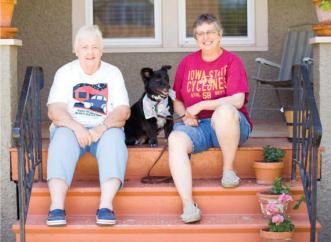
Sharon and Beth will be closing the location of Minne Lusa House at 2737 Mary Street
After spending years working on casting a vision for the neighborhood, attending countless civil and community meetings, giving up family time to attend events, and seeing a tired community wake up, I began to panic a little that maybe things were headed in the wrong direction.
I was feeling uprooted. My family was doing a little grieving at moving away from a house filled with so many memories. The main community engine in the neighborhood was shutting down. What would this mean for me personally? For my family? For the neighborhood? Not to paint too bleak a picture, but I really questioned if all of our neighbors’ hard work from the previous years would end up being undone. That’s a scary thought for many families in Minne Lusa who have begun to feel the benefits of the stability and upward trend of the neighborhood.
But recently, it has become clear to me that what I was seeing was not the end of things. What was happening was a series of new beginnings. When we sold our home on the Boulevard, we had originally planned to move out of the neighborhood to a home that was a little more conveniently located to our extended family. Instead, we bought an adorable long-vacant pink bungalow on Mary Street.  We moved in at the beginning of December and have been working on waking the house up from a long and neglected slumber. Our family has been building memories here as the work we’re doing is helping the Bungalow feel more and more like home. At the same time, neighbors around the neighborhood have volunteered to keep up meeting on Saturday mornings after the Minne Lusa House closes its doors. Instead, friends and neighbors will be meeting in individual homes on rotation as front porches around Minne Lusa will become new touchpoints for visitors and longtime friends. The Minne Lusa House as a location may be closing, but the original mission of the house – to create community – is actually coming to fruition in a more complete way. As individual neighbors invest their time in welcoming people into their living rooms for coffee on Saturday mornings, the ownership of the Minne Lusa House becomes widespread.
We moved in at the beginning of December and have been working on waking the house up from a long and neglected slumber. Our family has been building memories here as the work we’re doing is helping the Bungalow feel more and more like home. At the same time, neighbors around the neighborhood have volunteered to keep up meeting on Saturday mornings after the Minne Lusa House closes its doors. Instead, friends and neighbors will be meeting in individual homes on rotation as front porches around Minne Lusa will become new touchpoints for visitors and longtime friends. The Minne Lusa House as a location may be closing, but the original mission of the house – to create community – is actually coming to fruition in a more complete way. As individual neighbors invest their time in welcoming people into their living rooms for coffee on Saturday mornings, the ownership of the Minne Lusa House becomes widespread.
At the pink bungalow on Mary Street, we continue to scrape and sand and run wires and undo 50 years worth of time. Our goal as a family was to give this home “another hundred years”. So with every bruised knuckle and filled plaster crack, with every stroke of paint and repaired window, we remind ourselves that we are helping get this home into its next century of life. And outside of the pink bungalow, neighbors are taking the same kind of ownership of our community. With every cup of coffee and planted flower, with every decorated Boo-levard island and neighborhood cleanup, be reminded that the community here is helping get this neighborhood into its next century of life. What’s happening in my family’s life and in Minne Lusa is not the end of anything. It is a new beginning for everything.
If you’re not already a part of what goes on in Minne Lusa but you would like to be, don’t wait to be approached. Feel free to come to coffee any Saturday morning and throw out your ideas. Contact us on Facebook at http://www.facebook.com/MinneLusa and tell us what you want to see happen. We have a great network of people in the neighborhood who all give varying amounts of time and resources as they are able to make this place one of the coolest communities you’ll find in Omaha or elsewhere. Take pride, and take ownership. There’s some new beginnings happening here and you won’t want to miss out.
Here’s a quick video about why taking ownership in your community is important. Check it out if you get tired of listening to me yammer on at you about it:

 Many of you know that I moderate a
Many of you know that I moderate a 
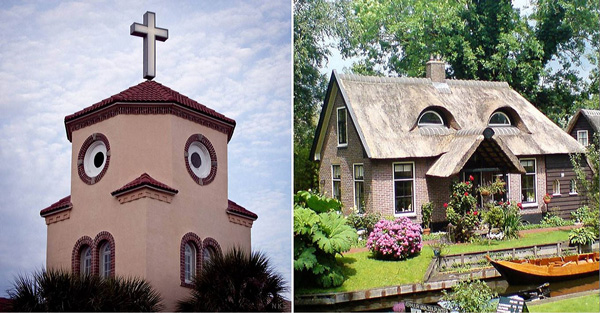
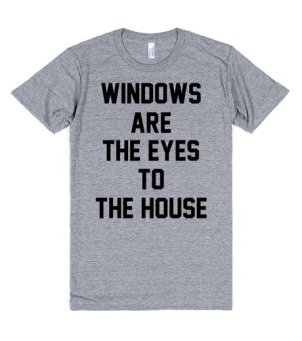
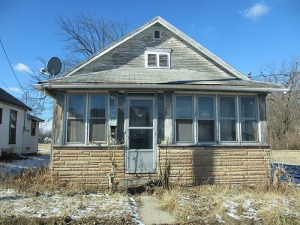 houses that feel “dead” and some that feel particularly “alive.” Dead houses tend to feel darker, even during the day. Windows are all closed. Shrubbery is overgrown. Simple maintenance things like loose gutters or broken blinds have been overlooked. No matter how cheery the rest of the houses along the street feel, the “dead” house catches the eye. Sometimes these houses have actually been abandoned. Other times, they’ve just been neglected.
houses that feel “dead” and some that feel particularly “alive.” Dead houses tend to feel darker, even during the day. Windows are all closed. Shrubbery is overgrown. Simple maintenance things like loose gutters or broken blinds have been overlooked. No matter how cheery the rest of the houses along the street feel, the “dead” house catches the eye. Sometimes these houses have actually been abandoned. Other times, they’ve just been neglected.
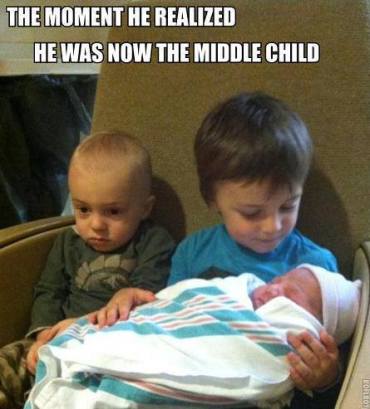 Full disclosure: I’m a middle child. Sometimes it feels like it takes a middle child to notice one. For those of you who don’t know what middle-child syndrome is or who roll your eyes when it’s mentioned, you must be firstborns or only children. Middle-child syndrome is real . . . so real.
Full disclosure: I’m a middle child. Sometimes it feels like it takes a middle child to notice one. For those of you who don’t know what middle-child syndrome is or who roll your eyes when it’s mentioned, you must be firstborns or only children. Middle-child syndrome is real . . . so real.
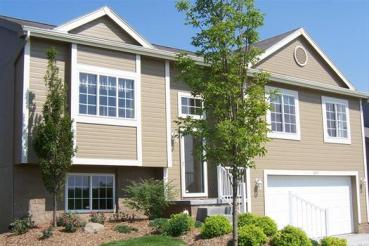

 wonderful community. People love living here . . . because of the people. There are other neighborhoods in Omaha with bungalows. There are other old houses to buy. There is a whole network of boulevards surrounded by old homes with charm. What sets Minne Lusa apart from all of them is the PEOPLE. When those people become less important than the houses they live in, our community will start to fade and we will become no different from the beige plywood wonderlands of other communities where people tend to live rather isolated lives in their covenant-governed paint schemes.
wonderful community. People love living here . . . because of the people. There are other neighborhoods in Omaha with bungalows. There are other old houses to buy. There is a whole network of boulevards surrounded by old homes with charm. What sets Minne Lusa apart from all of them is the PEOPLE. When those people become less important than the houses they live in, our community will start to fade and we will become no different from the beige plywood wonderlands of other communities where people tend to live rather isolated lives in their covenant-governed paint schemes. I got to thinking that neighborhoods seem to follow a lot of the same patterns in development stages as people do. Now, nobody has to potty train a string of houses, but follow along with me here. In neighborhoods, most houses are born looking perfect and innocent and almost identical, just like human babies. You ever been to a hospital nursery? Sure the babies are slightly different shades, some are slightly larger than others, but generally speaking, it’s pretty hard to tell babies apart. Visit any freshly built neighborhood and you’ll quickly recognize this stage. It’s not uncommon to see the house parents standing out front grasping each other while they beam proudly at their fresh baby house. It’s so perfect, so unaffected by the cruel world. Human babies stay in this phase for about 1 year while neighborhoods seem to stay here for about 3 years.
I got to thinking that neighborhoods seem to follow a lot of the same patterns in development stages as people do. Now, nobody has to potty train a string of houses, but follow along with me here. In neighborhoods, most houses are born looking perfect and innocent and almost identical, just like human babies. You ever been to a hospital nursery? Sure the babies are slightly different shades, some are slightly larger than others, but generally speaking, it’s pretty hard to tell babies apart. Visit any freshly built neighborhood and you’ll quickly recognize this stage. It’s not uncommon to see the house parents standing out front grasping each other while they beam proudly at their fresh baby house. It’s so perfect, so unaffected by the cruel world. Human babies stay in this phase for about 1 year while neighborhoods seem to stay here for about 3 years. hiccup last week. Seems like we shouldn’t be dealing with that already, but they can’t stay young forever can they? Ha Ha!” “Oh don’t we know it! Why last month we had to have our little one fitted for a new roof. Golly, they just go through them so fast don’t they?” The toddling phase for humans is usually from about year 1 to about year 4. This phase for neighborhoods is usually about year 3 until about year 10.
hiccup last week. Seems like we shouldn’t be dealing with that already, but they can’t stay young forever can they? Ha Ha!” “Oh don’t we know it! Why last month we had to have our little one fitted for a new roof. Golly, they just go through them so fast don’t they?” The toddling phase for humans is usually from about year 1 to about year 4. This phase for neighborhoods is usually about year 3 until about year 10.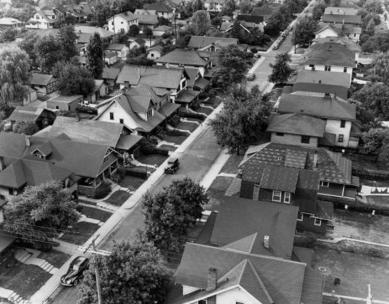 This is the pivotal point for most neighborhoods, as it is with most young adults. It’s time to really decide what kind of a place the neighborhood wants to be. It will have to face the same decisions that people do at this stage in its life. The neighborhood is now in its early 30’s, equivalent to a human about 19-21yrs old. There’s some tough choices ahead. The carefree ease of the social stage won’t last through this period on its own. The houses are getting older and will require some discipline to take care of them. Will the neighborhood contribute to the society around it? Or will it become stagnant. Anyone who’s ever been a young 20-something or has ever known one will recognize this stage. People, and neighborhoods, in this stage might be tempted to try to stay in that easy social period, but the really great ones continue to push themselves to grow and improve. The young adult phase doesn’t last long in people – about 5-7 years. But this phase can be almost indefinite for some neighborhoods with no real end point, though the average time frame seems to be somewhere between 10-20 years. This leads us into the Slump.
This is the pivotal point for most neighborhoods, as it is with most young adults. It’s time to really decide what kind of a place the neighborhood wants to be. It will have to face the same decisions that people do at this stage in its life. The neighborhood is now in its early 30’s, equivalent to a human about 19-21yrs old. There’s some tough choices ahead. The carefree ease of the social stage won’t last through this period on its own. The houses are getting older and will require some discipline to take care of them. Will the neighborhood contribute to the society around it? Or will it become stagnant. Anyone who’s ever been a young 20-something or has ever known one will recognize this stage. People, and neighborhoods, in this stage might be tempted to try to stay in that easy social period, but the really great ones continue to push themselves to grow and improve. The young adult phase doesn’t last long in people – about 5-7 years. But this phase can be almost indefinite for some neighborhoods with no real end point, though the average time frame seems to be somewhere between 10-20 years. This leads us into the Slump. grandparents dancing together in their early 80’s. There was something about that grace and permanence that was so desirable. Something about the style and character of a different era seems so romantic. This phase for neighborhoods, like the Slump, can be indefinite. Some Established Phase neighborhoods can carry on for generations, never losing their appeal. If we can really utilize the Revitalization period, I see Minne Lusa becoming one of Omaha’s Established neighborhoods, a place that people will always be trying to get into.
grandparents dancing together in their early 80’s. There was something about that grace and permanence that was so desirable. Something about the style and character of a different era seems so romantic. This phase for neighborhoods, like the Slump, can be indefinite. Some Established Phase neighborhoods can carry on for generations, never losing their appeal. If we can really utilize the Revitalization period, I see Minne Lusa becoming one of Omaha’s Established neighborhoods, a place that people will always be trying to get into.